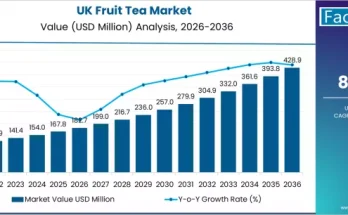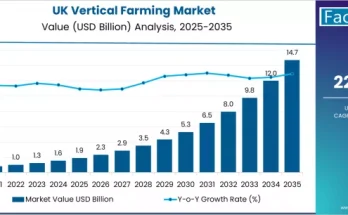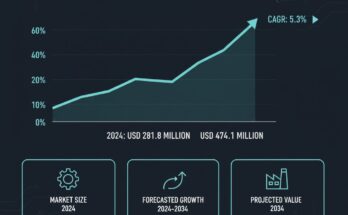The global baby drinks market is forecast to experience robust expansion over the next decade, driven by strong demand for nutritious, convenient infant beverages. Data-backed projections indicate substantial growth in market size and sustained innovation, positioning this sector as one of the fastest-growing segments in the broader baby nutrition space.
Impressive Growth Forecasts
Recent market modeling estimates suggest that the baby drinks market will expand from approximately US$ 195 billion in 2025 to as much as US$ 477 billion by 2035, representing a solid compound annual growth rate (CAGR) of around 9.3 percent over that period. Alternative projections estimate the market could reach roughly US$ 254 billion by 2035, corresponding to a CAGR of approximately 7 percent. These aligned forecasts highlight a powerful, sustained growth trajectory regardless of differing base assumptions.
Key Growth Drivers
Several major trends are fueling this rapid expansion:
-
Rising Focus on Early-Life Nutrition
Parents today are more educated and health-aware than ever before. There is growing demand for scientifically formulated baby drinks enriched with essential vitamins, minerals, probiotics, and other functional ingredients to support healthy infant development. -
Convenience and Time Constraints
With more dual-income households and working parents, the need for ready-to-use or easily prepared baby beverages has never been stronger. Busy parents are looking for safe, nutritionally complete options that can slot seamlessly into their day-to-day routines. -
Premiumization and Clean-Label Preferences
Health-conscious consumers are driving a shift toward premium, organic, plant-based, and hypoallergenic baby drink options. This has sparked innovation among manufacturers eager to meet the demand for products with simple, transparent ingredient lists. -
Digital Channels & E-Commerce Growth
The distribution landscape is transforming. Online retailers, subscription services, and digital-first baby brands are making it easier for parents to access a wider variety of baby drinks. This shift to e-commerce is enhancing reach and convenience, especially for time-pressed consumers.
Market Segmentation & Regional Insights
-
By Product Type: Baby formula remains the dominant category, representing nearly half of the global baby drinks market. Specialized functional beverages (such as those with added nutrients or tailored for specific developmental stages) are gradually gaining traction.
-
By Distribution Channel: Pharmacies and drugstores continue to lead as the primary channels for baby drinks. However, online platforms are growing rapidly, particularly in developed markets, driven by subscription models and increasingly sophisticated direct-to-consumer strategies.
-
Regional Dynamics:
-
The Asia-Pacific region stands out as the fastest-growing market, fueled by favorable demographic trends, rising disposable incomes, and increasing adoption of modern infant nutrition solutions.
-
Within this region, India and China are especially notable. These markets are projected to post some of the highest compound annual growth rates over the forecast period, thanks to large birth cohorts, rising urbanization, and expanding retail infrastructure.
-
Key Challenges & Risks
Despite the promising outlook, the baby drinks market faces several challenges:
-
Raw Material Volatility: The cost of dairy, plant-based proteins, and organic ingredients can be unpredictable, putting pressure on manufacturers’ margins.
-
Regulatory Compliance: Ensuring strict safety, quality, and traceability standards is critical. Adherence to regulatory requirements adds to production complexity and cost.
-
Affordability in Emerging Economies: While demand is strong in developing markets, premium baby drink products may remain financially out of reach for lower-income families, limiting market penetration.
Competitive Landscape & Innovation Trends
The competitive environment in the baby drinks sector is moderately concentrated, with a few global players holding substantial market share. Leading companies are increasingly investing in innovation, particularly around clean-label, age-specific formulations, and sustainable packaging.
Key areas of strategic focus include:
-
Age-specific nutrition – Formulations designed for different developmental stages (newborns, infants, toddlers) with tailored nutrient profiles.
-
Plant-based and hypoallergenic options – Catering to parents who prefer alternatives to conventional dairy-based formula.
-
Sustainability – Innovation in packaging materials and sourcing practices to reduce environmental footprint and respond to consumer demand for responsible products.
Browse Full Report : https://www.factmr.com/report/baby-drinks-market
Strategic Priorities for Stakeholders
To navigate and thrive in this evolving market, companies should consider the following strategic imperatives:
-
Innovate with Purpose: Develop science-backed, clean-label baby drinks that address age, health, and dietary preferences.
-
Optimize Distribution: Expand through e-commerce platforms, subscription models, and partnerships with pharmacy chains to maximize reach.
-
Maintain Rigorous Standards: Invest in quality control, regulatory compliance, and ingredient traceability to build trust with caregivers.
-
Target High-Growth Regions: Focus on scaling operations in Asia-Pacific markets, especially India and China, to capitalize on high demographic potential.



